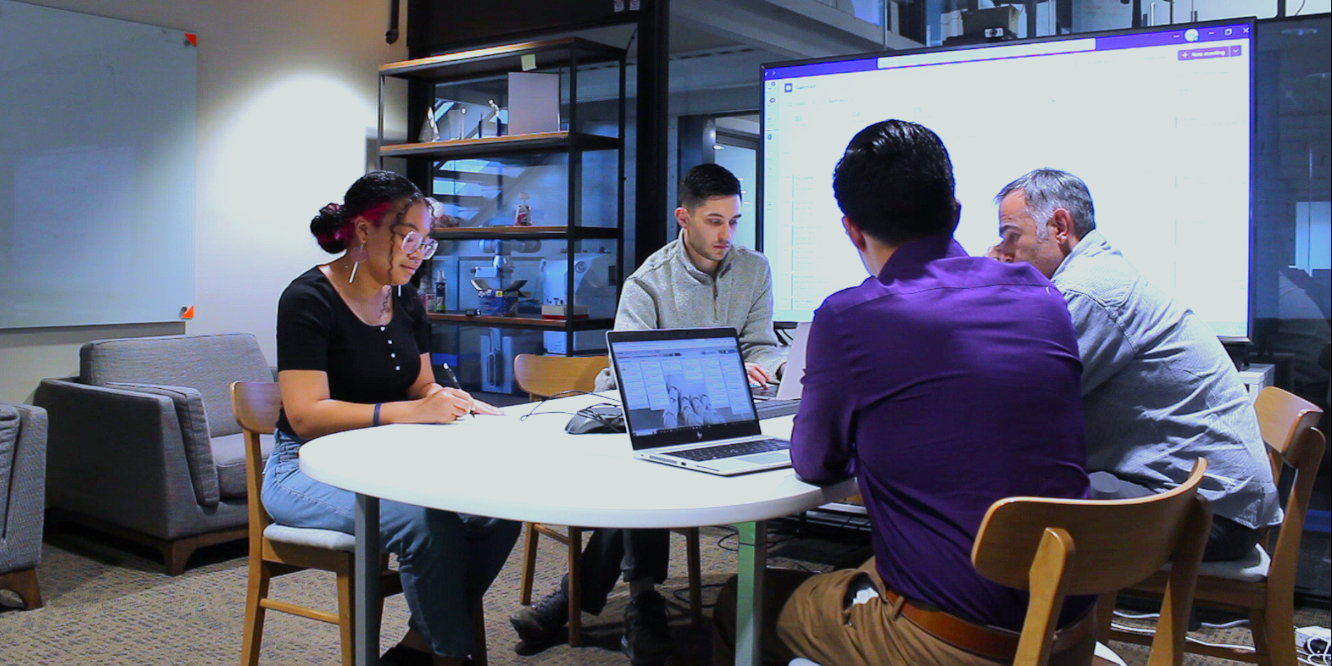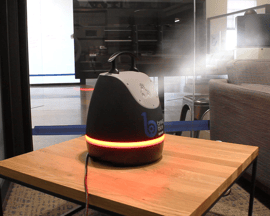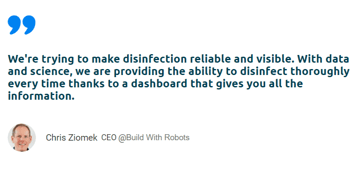
How Clean & Disinfected Spaces Affect Workers' Well-being
Everything around us affects our physical and mental well-being. Facility managers and HR professionals are beginning to prioritize clean and safe work environments because of the effects of a workplace on its employees. A building that is free of germs, messes, and clutter fosters productivity for workers, students, and everyone who enters the space.
The Link Between Cleanliness and Mental Health
Today, Americans spend about 90% of their time indoors, according to the EPA, so it is imperative that these spaces are healthy to be in. According to Harvard School of Public Health, several factors have a direct impact on the physical and mental health of occupants in a building, including:
- Ventilation
- Air quality
- Dust and pests
- Safety and security
- Thermal comfort
- Noise and lighting
Cleanliness, air quality, and the amount of dust directly affect physical health; these factors can cause illness and allergies if not properly taken care of. The other listed items are more related to mental health. When someone feels safe, comfortable, and peaceful, they are more productive than if they felt unsafe, sweaty, and distracted by noise and flickering lights. Additionally, all of these factors, including the ones related to physical health, affect human cognition and productivity. This is part of why air quality has become a common point of discussion in the past few years. Not only does clean air keep people healthy and in the office; it keeps them working to their best ability. Moreover, a clean workplace impacts how occupants view themselves, how they believe their employer values them, and how occupants perceive fellow coworkers.
New Protocols for Healthy Spaces
Since 2020, facilities have made significant changes for indoor health, such as replacing HVAC systems, implementing air purifiers, disinfecting daily, and scaling up their custodial teams. These adjustments tend to be costly, but the health and safety of employees and other building occupants are worth the investment. Regular cleaning, disinfecting, and air filtration contribute to the quality of a workplace and the productivity of workers.
Disinfection is an often forgotten element of indoor air quality (learn more in this blog post), but many facilities have included it in their protocols for healthier spaces, especially since the pandemic started. High-touch surfaces such as doorknobs, keyboards, and communal areas are particularly vulnerable to contamination and should be disinfected regularly. Failure to do so can result in an outbreak that can affect the entire workforce, leading to lost productivity and increased absenteeism. New disinfecting protocols involve using hospital-grade disinfectants, electrostatic sprayers, and/or UV technology to ensure thorough disinfection.
 Disinfectant foggers, such as Breezy Blue, are able to reach all areas in a room with a short amount of fogging time (50 seconds for an average classroom). In addition to settling on surfaces, fog particles are small enough that they often hang in the air, combatting airborne diseases and ensuring a room can be reentered with at least a 99.9% reduction in germs. UV disinfection also renders airborne pathogens ineffective, but misses shadow areas. Electrostatic sprayers have a high log-kill but only disinfect the surfaces they are sprayed on. When focusing on overall health and cleanliness of a facility, any combination of these methods can keep a space well disinfected.
Disinfectant foggers, such as Breezy Blue, are able to reach all areas in a room with a short amount of fogging time (50 seconds for an average classroom). In addition to settling on surfaces, fog particles are small enough that they often hang in the air, combatting airborne diseases and ensuring a room can be reentered with at least a 99.9% reduction in germs. UV disinfection also renders airborne pathogens ineffective, but misses shadow areas. Electrostatic sprayers have a high log-kill but only disinfect the surfaces they are sprayed on. When focusing on overall health and cleanliness of a facility, any combination of these methods can keep a space well disinfected.
Air purification and disinfectant fogging also deodorize areas, leaving behind a pleasant, fresh scent that improves the mood and wellbeing of employees.
The Role of Employees in Cleanliness
Creating a culture of cleanliness means making it a top priority and involving everyone in maintaining a clean and healthy workplace. While HR and facility professionals play a crucial role in the implementation of cleaning and disinfection protocols, employees must also take responsibility for maintaining a clean and safe workplace. Employees should be encouraged to keep their areas neat as well as practice good hygiene, such as regular handwashing. All employees should be provided with disinfectant wipes and sprays to clean their workstations and equipment.
Neatness and cleanliness are noticeable, but disinfected spaces look identical to germ-filled places. Employees want to know that they are in a safe space, so facility managers have to prove that they are putting in the effort to keep their buildings clean and healthy. According to a CNBC survey, 84% of Americans find employee health and wellness to be very important in a post-pandemic work model. Additionally, 86% of Americans want proof that workplaces and businesses are following regular cleaning and sanitation protocols.
Employees should be trained on the proper use of disinfectants and disinfection equipment. They should be educated on the importance of disinfection and encouraged to report any issues that require attention. Breezy Blue smart foggers can be placed in every office or room, and workers can set it off as they leave for the day. Or, each unit can operate on a schedule when no one is around. These are simple ways to ensure occupied spaces are disinfected every day with a visible (and nice-smelling) reminder to employees.
The Psychology of Clean Workplaces
Disinfection is critical in maintaining a healthy and safe work environment, even as we phase out of the COVID-19 pandemic. By adopting new disinfection protocols and involving employees in maintaining a clean and safe workplace, HR and facility professionals can prevent the spread of infectious diseases and ensure the productivity and wellbeing of the workforce.
The new psychology of clean is about recognizing that cleanliness is essential for both physical and emotional wellbeing in the workplace. By adopting new cleaning protocols that prioritize both aspects of cleanliness, work environments can become healthier, happier, and more productive. Furthermore, promoting cleanliness as a company culture can instill a sense of pride and responsibility among employees, leading to a more positive and collaborative workplace.




